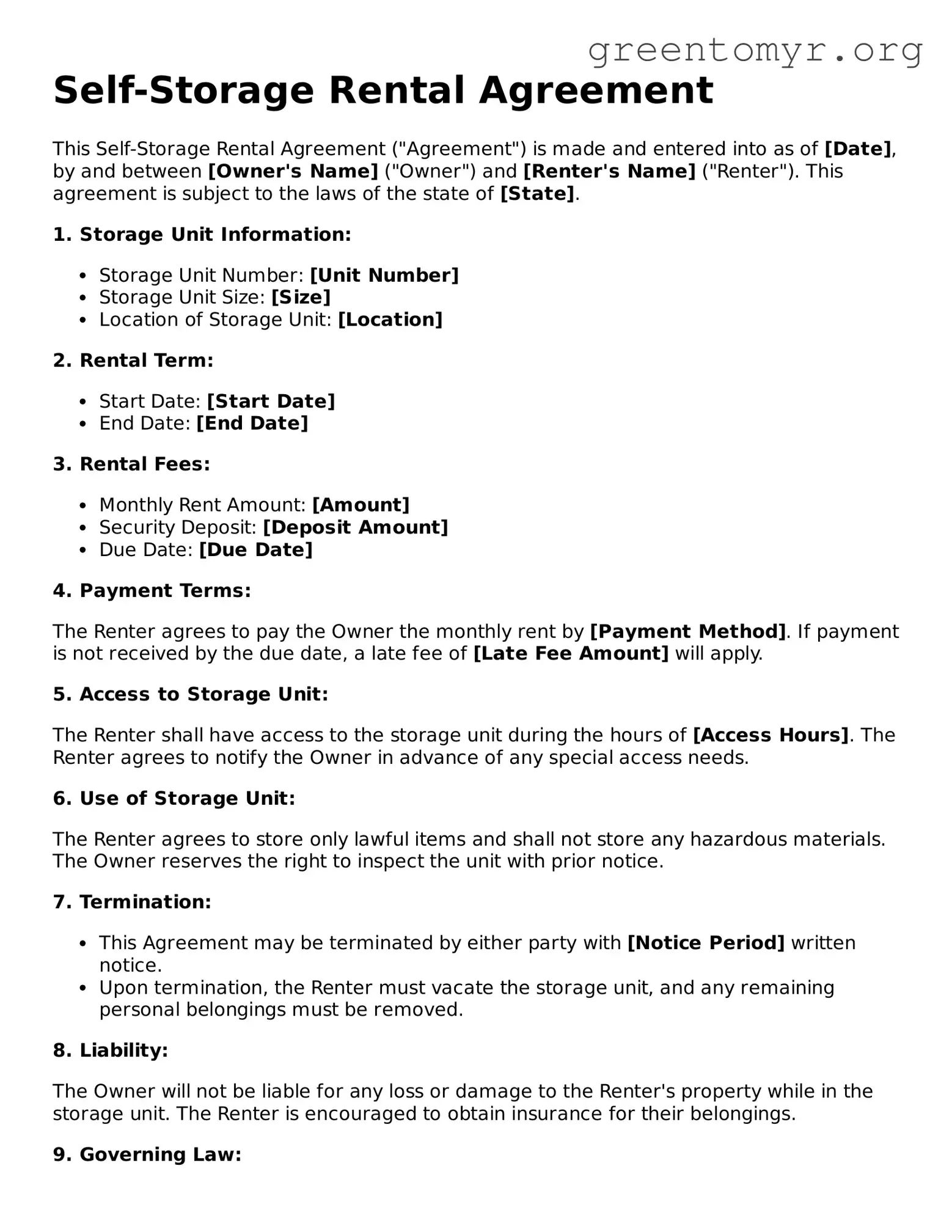Self-Storage Rental Agreement
This Self-Storage Rental Agreement ("Agreement") is made and entered into as of [Date], by and between [Owner's Name] ("Owner") and [Renter's Name] ("Renter"). This agreement is subject to the laws of the state of [State].
1. Storage Unit Information:
- Storage Unit Number: [Unit Number]
- Storage Unit Size: [Size]
- Location of Storage Unit: [Location]
2. Rental Term:
- Start Date: [Start Date]
- End Date: [End Date]
3. Rental Fees:
- Monthly Rent Amount: [Amount]
- Security Deposit: [Deposit Amount]
- Due Date: [Due Date]
4. Payment Terms:
The Renter agrees to pay the Owner the monthly rent by [Payment Method]. If payment is not received by the due date, a late fee of [Late Fee Amount] will apply.
5. Access to Storage Unit:
The Renter shall have access to the storage unit during the hours of [Access Hours]. The Renter agrees to notify the Owner in advance of any special access needs.
6. Use of Storage Unit:
The Renter agrees to store only lawful items and shall not store any hazardous materials. The Owner reserves the right to inspect the unit with prior notice.
7. Termination:
- This Agreement may be terminated by either party with [Notice Period] written notice.
- Upon termination, the Renter must vacate the storage unit, and any remaining personal belongings must be removed.
8. Liability:
The Owner will not be liable for any loss or damage to the Renter's property while in the storage unit. The Renter is encouraged to obtain insurance for their belongings.
9. Governing Law:
This Agreement shall be governed by the laws of the state of [State].
10. Signatures:
By signing below, both parties agree to the terms of this Self-Storage Rental Agreement.
Owner's Signature: _________________________ Date: ____________
Renter's Signature: _________________________ Date: ____________
